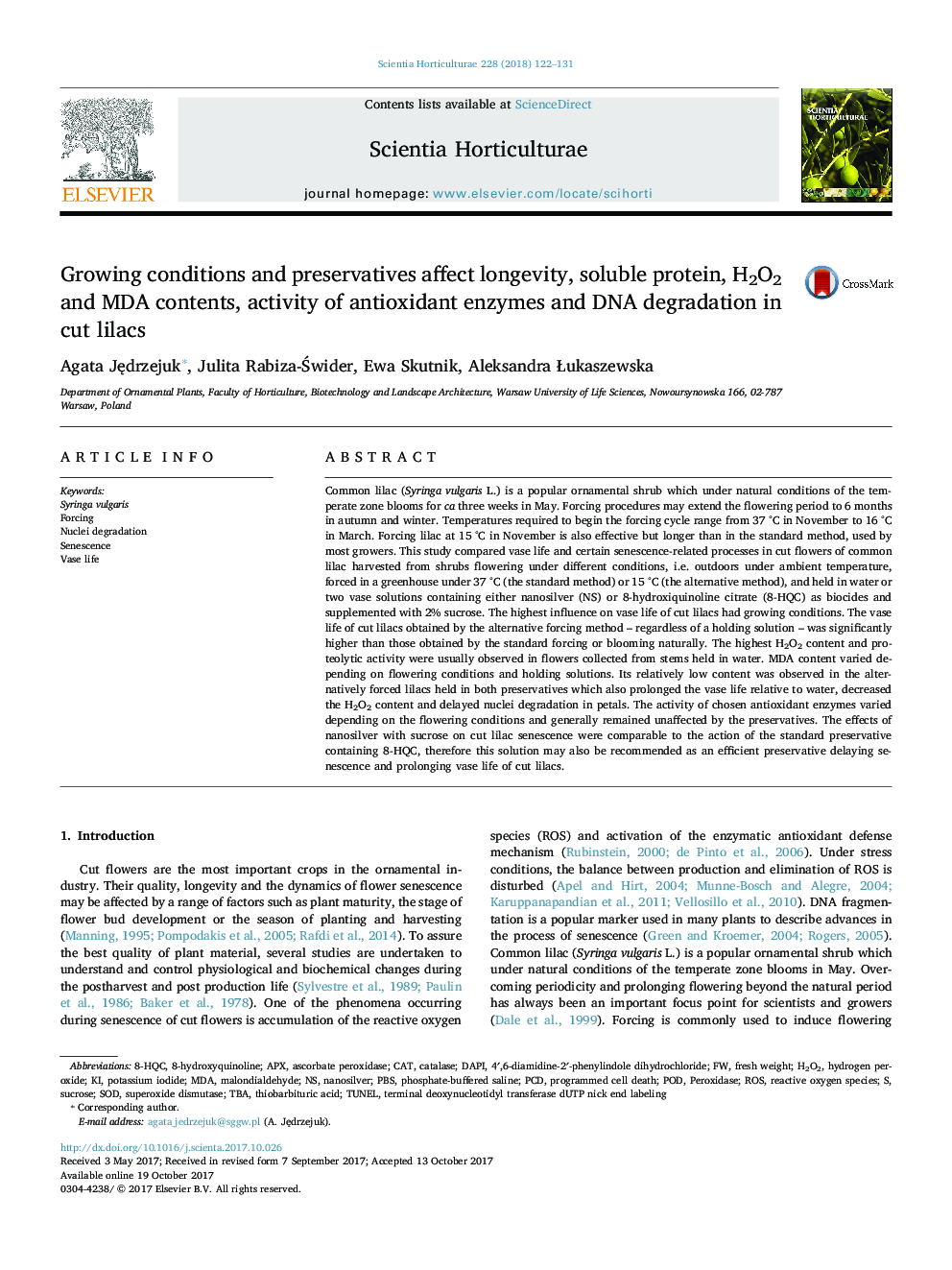| کد مقاله | کد نشریه | سال انتشار | مقاله انگلیسی | نسخه تمام متن |
|---|---|---|---|---|
| 5769219 | 1628770 | 2018 | 10 صفحه PDF | دانلود رایگان |

- Flowering conditions affected the postharvest performance of cut lilacs.
- Standard forcing shortened vase life and intensified senescence in lilac flowers.
- The vase life of cut lilacs obtained by the alternative forcing was the highest.
- 8-HQC or NS with 2% sucrose significantly prolonged vase life of cut lilacs.
- The preservatives did not affect antioxidant enzymes activity in lilac flowers.
Common lilac (Syringa vulgaris L.) is a popular ornamental shrub which under natural conditions of the temperate zone blooms for ca three weeks in May. Forcing procedures may extend the flowering period to 6 months in autumn and winter. Temperatures required to begin the forcing cycle range from 37 °C in November to 16 °C in March. Forcing lilac at 15 °C in November is also effective but longer than in the standard method, used by most growers. This study compared vase life and certain senescence-related processes in cut flowers of common lilac harvested from shrubs flowering under different conditions, i.e. outdoors under ambient temperature, forced in a greenhouse under 37 °C (the standard method) or 15 °C (the alternative method), and held in water or two vase solutions containing either nanosilver (NS) or 8-hydroxiquinoline citrate (8-HQC) as biocides and supplemented with 2% sucrose. The highest influence on vase life of cut lilacs had growing conditions. The vase life of cut lilacs obtained by the alternative forcing method - regardless of a holding solution - was significantly higher than those obtained by the standard forcing or blooming naturally. The highest H2O2 content and proteolytic activity were usually observed in flowers collected from stems held in water. MDA content varied depending on flowering conditions and holding solutions. Its relatively low content was observed in the alternatively forced lilacs held in both preservatives which also prolonged the vase life relative to water, decreased the H2O2 content and delayed nuclei degradation in petals. The activity of chosen antioxidant enzymes varied depending on the flowering conditions and generally remained unaffected by the preservatives. The effects of nanosilver with sucrose on cut lilac senescence were comparable to the action of the standard preservative containing 8-HQC, therefore this solution may also be recommended as an efficient preservative delaying senescence and prolonging vase life of cut lilacs.
Journal: Scientia Horticulturae - Volume 228, 26 January 2018, Pages 122-131